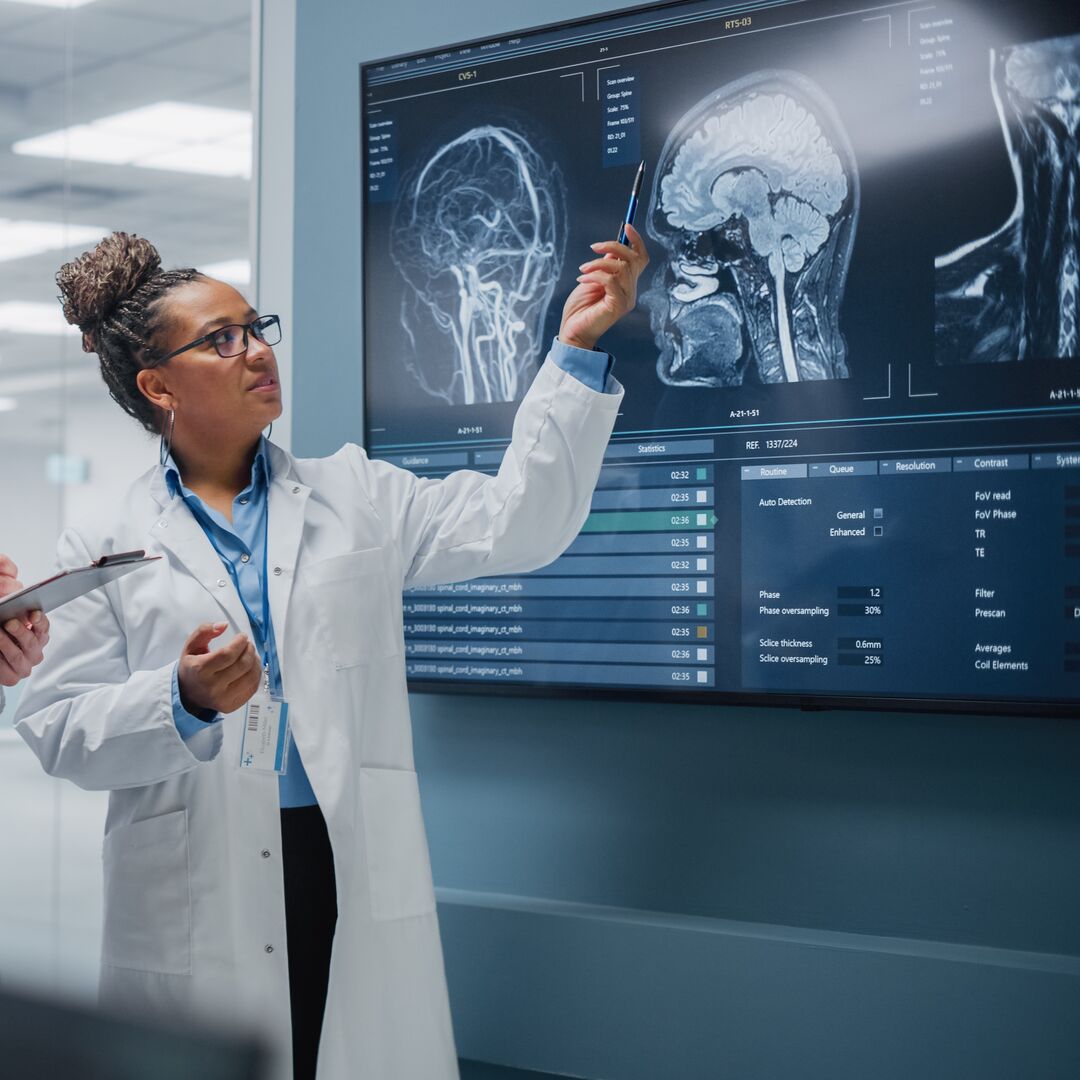Radiologists interpret medical images to aid in diagnosis and treatment planning. They provide critical insights into conditions like fractures, tumours and organ diseases using technologies such as X-rays, MRIs, ultrasounds and CT scans.
Radiologists work closely with medical teams to make precise diagnoses and treatment decisions. They operate in diverse settings, including hospitals, diagnostic centres and private practices, playing a vital role in healthcare.
As the demand for accurate diagnostic imaging grows, the field of radiology offers promising career prospects in Australia. This article explores the educational path, registration requirements and practical experience essential for a successful career in radiology.
What is a radiologist?
Radiologists identify and diagnose a wide range of medical conditions and neurological disorders. They select the appropriate imaging technique and adjust equipment settings to obtain high-quality images while minimising radiation exposure and other risks to patients. These specialists help referring physicians make informed decisions about treatment options and surgical interventions.
Radiologists also conduct clinical trials and collaborate with other healthcare professionals to advance imaging technology and diagnostic techniques, leading to improved patient care and outcomes.
To maintain their expertise, radiologists engage in continuous education and professional development. They stay up to date with the latest developments in imaging technology, radiation safety protocols and medical research.
What does a radiologist do?
These are the primary roles and responsibilities of a radiologist. They:
- interpret medical images obtained through techniques like X-rays, CT scans, MRIs, ultrasounds and nuclear medicine scans. Analyse images to identify, diagnose and monitor a wide spectrum of medical conditions
- collaborate with referring physicians and healthcare teams to provide comprehensive patient care. This includes offering specialised insights to help clinicians make informed decisions about treatment plans and interventions
- select the most suitable imaging techniques and adjust equipment settings to achieve high-quality images while minimising radiation exposure for patients. This includes administering contrast agents when necessary to enhance diagnostic accuracy
- stay up to date with the latest developments in imaging technology, radiation safety protocols and medical research
- advocate for patient safety, emphasising rational imaging practices and working to reduce errors in the interpretation of diagnostic images
- participate in quality assurance programs to maintain and enhance the quality of radiologic services in healthcare facilities
- prepare detailed reports based on image interpretations and convey findings to referring physicians. These reports are a crucial component of the patient's medical record and guide further clinical decisions
How much does a radiologist earn in Australia?
Radiologists typically have competitive salaries that can vary based on several factors, including their level of experience, geographical location and specialisation within the field.
Radiologist positions are advertised on job platforms like LinkedIn, SEEK and Indeed. On average, the radiologist salary in Australia is $136,000 per annum.
Radiology plays a crucial role in modern medicine, with diagnostic imaging being an integral part of patient care. The demand for skilled radiologists remains strong, with job growth of 7 per cent expected over the following five years.
Radiologists have diverse career pathways to explore. They can specialise in areas like diagnostic radiology, interventional radiology, neuroradiology or musculoskeletal radiology. Opportunities also extend to roles in academic research, healthcare administration and government health agencies.
In addition to financial rewards, a career in radiology offers the satisfaction of contributing to patient care by providing critical diagnostic insights, aiding in treatment decisions and playing an essential role in advancing medical knowledge and technology.
Five steps to becoming a radiologist in Australia
It takes several years of training to achieve qualification as a radiologist. These are the five main steps you'll need to follow.
- Assess the essential skills and qualities required
The path to becoming a radiologist demands certain skills and qualities. These include strong attention to detail, analytical thinking, effective communication, empathy and a commitment to patient-centred care. Take time to evaluate whether these attributes align with your abilities and career aspirations.
- Study radiology and pursue the required education
Your journey will begin by completing a relevant undergraduate degree followed by a Doctor of Medicine. A minimum ATAR of 96 is required for entry by many Australian universities. Postgraduate applicants will also need to complete a Graduate Medical School Admission Test (GASMAT) as an entry requirement.
Alternatively, you may complete a double degree such as a Bachelor of Medical Studies / Doctor of Medicine.
The process typically involves six years of full-time study.
- Obtain registration
After obtaining your degree, you’ll need to register as a Medical Practitioner with the Medical Board of Australia and then gain two or more years of post-degree experience as an intern or resident in an approved hospital setting.
- Achieve fellowship
Finally, you will apply to the Royal Australian and New Zealand College of Radiologists to complete a five-year training program in order to achieve fellowship.
- Explore employment opportunities
With your registration secured, you can explore various job opportunities within the field of radiology. Radiologists find employment in settings like hospitals, medical imaging clinics and research institutions.
Networking with fellow radiologists and participating in relevant professional events can help you discover promising career paths and opportunities for specialisation, such as in areas like MRI, CT scanning, neuroradiology, musculoskeletal radiology, interventional radiology or nuclear medicine.
A career in radiology
A career as a radiologist offers excellent prospects for personal and professional development. Radiologists play a pivotal role in healthcare, focusing on diagnostic imaging and contributing to improved patient outcomes.
By completing the necessary radiologist courses, gaining hands-on experience, and seeking job opportunities, you can embark upon a fulfilling career in the field. This will enable you to significantly contribute to the health of Australians through accurate medical diagnoses.
Looking to study a postgraduate health course? Explore courses in our offered disciplines, including nursing, mental health, public health, counselling, leadership, psychology and social work.


















